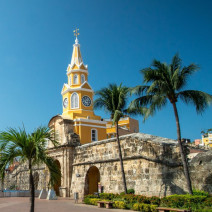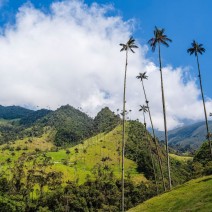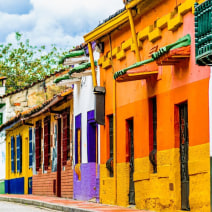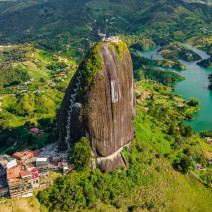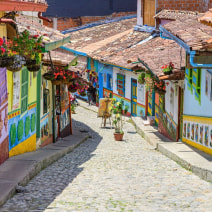Colombia Travel Guide
Colombia is a country of striking diversity, offering an exciting blend of vibrant cities, colonial charm, cultural richness, and breathtaking natural beauty. Colombia has a population of approximately 52 million people, with Spanish as the official language and English spoken in many tourist areas. Its capital city, Bogotá, is a cultural and political centre nestled in the Andes, while Medellín – known as the City of Eternal Spring – and Cartagena, with its Caribbean warmth and coastal charm, offer a unique mix of innovation, history, and flair.
Long known for its artistic spirit and emerging as a major cultural destination, Colombia has gained global interest through its music, literature, and culinary scene. Travellers can explore its past in the historic centre of Cartagena, enjoy world-renowned coffee in the lush Zona Cafetera, or visit Salento, the gateway to the towering wax palms of the Cocora Valley and the heart of Colombia’s coffee culture. It is one of the most biodiverse countries in the world, with landscapes ranging from tropical rainforests to snow-capped peaks, and cities that embrace sustainability. Medellín is a model of urban innovation, cooling the city by 2°C through green corridors that improve air quality, provide shade, and promote cycling.
We've outlined some general information that may be helpful to you when planning your next holiday to Colombia.

Time Zone & Currency in Colombia
Colombia is five hours behind Greenwich Mean Time (GMT-5) and does not observe daylight saving time. The currency is the Colombian Peso (COP).

Weather in Colombia
Colombia is a year-round destination with climates that vary by region: Medellín enjoys mild spring-like weather, Bogotá is cooler due to its high altitude, and Cartagena offers hot, humid, tropical conditions.

Reading For Your Trip To Colombia
One Hundred Years of Solitude by Gabriel García Márquez
The Sound of Things Falling by Juan Gabriel Vásquez
Fruit of the Drunken Tree by Ingrid Rojas Contreras
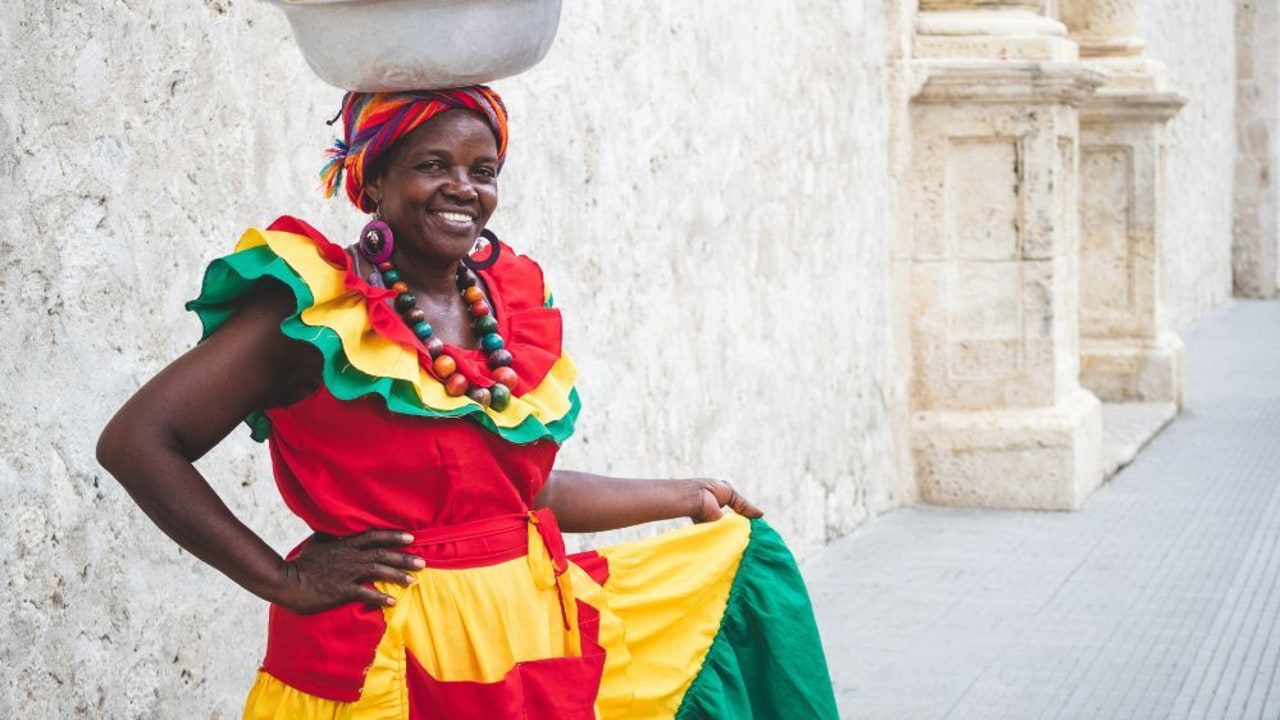
Best time to go to Colombia
While it’s great to visit Colombia all year round, we travel in October when each region offers its own appeal: cool, fresh days in Bogotá, mild spring-like weather in Medellín and warm tropical conditions in Cartagena. October is an excellent time for sightseeing, outdoor activities and enjoying many of the country’s top attractions.
Top Tourist Attractions In Colombia
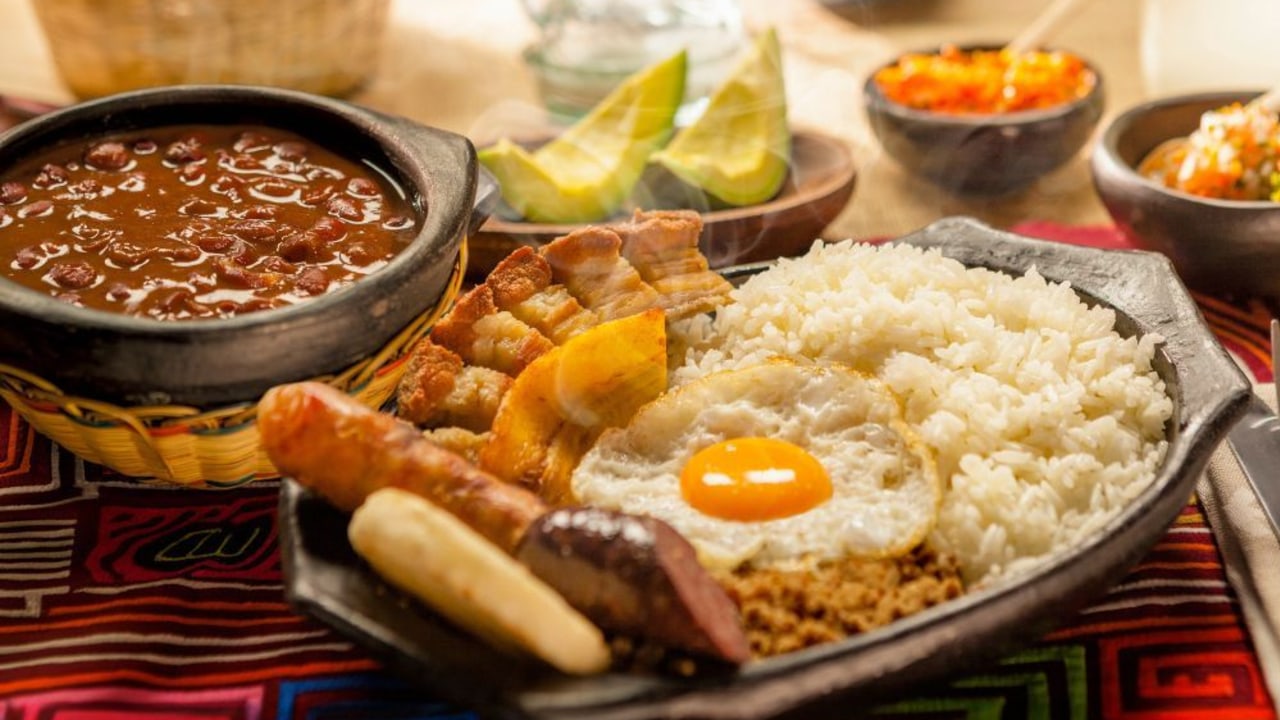
Food and drink in Colombia
Colombian cuisine is rooted in regional traditions and fresh, local ingredients. Some must-try dishes include:
- Arepas: Cornmeal cakes filled or topped with cheese, meats or eggs, enjoyed at any time of day.
- Ajiaco: A hearty chicken and potato soup, especially popular in Bogotá.
- Bandeja Paisa: A generous platter of rice, beans, plantain, avocado, ground beef, chorizo, egg, and more, traditional in Medellín.
- Empanadas: Deep-fried savoury pastries filled with beef, chicken, or cheese.
- Sancocho: A rich, slow-cooked soup made with meat (often chicken, beef, or fish), plantain, potatoes, and yuca, typically served with rice and avocado.
- Tamales: Corn dough filled with meat, vegetables, and spices, wrapped in plantain leaves and steamed.
- Pandebono: A soft, cheesy bread roll, often eaten fresh from the oven for breakfast or as a snack.
Colombia produces some of the finest chocolate in the world, thanks to its diverse microclimates that create cacao with a distinctive quality and flavour. Today, artisan makers are sharing it globally, but it’s a treat best enjoyed while you’re there. It is also known for its world-famous coffee, as well as local drinks like aguapanela, fresh fruit juices, and chicha, a traditional fermented corn drink.
Colombia Travel Guide FAQs
Can you give a brief history of Colombia?
Colombia’s history spans millennia, beginning with advanced Indigenous cultures such as the Muisca, Quimbaya, and Tairona, who developed skilled goldwork, sophisticated agricultural systems, and extensive trade routes. Spanish explorers arrived in 1499, and by the early 16th century the territory was under colonial rule as part of the Viceroyalty of New Granada. After over 300 years of Spanish control, Colombia declared independence in 1810, achieving it definitively in 1819 under Simón Bolívar’s leadership as part of the short-lived Gran Colombia, before becoming the Republic of Colombia in 1831.
The following centuries brought rapid change alongside periods of instability, including multiple civil wars and La Violencia (1948–58), a decade-long conflict between political factions. In the late 20th century, the rise of powerful drug cartels, most notoriously led by Pablo Escobar, brought violence and international attention. Since the early 2000s, government reforms, peace agreements, and significant investment in security and infrastructure have reshaped the country.
Today, Colombia is a stable democracy and one of South America’s fastest-growing tourism destinations, celebrated for its UNESCO-listed heritage sites, rich literary tradition, musical talent, coffee production, and extraordinary biodiversity.
Do I need a holiday visa for Colombia?
Currently, British and Irish passport holders do not require a visa for short tourist visits to Colombia. However, travellers should always check with their local government authorities for the most up-to-date entry requirements. Passports must be valid for at least six months beyond your planned departure date. Some entry requirements may include proof of onward travel and accommodation.
Is Colombia safe?
Colombia once had a reputation for being unsafe, but in recent decades it has undergone an impressive transformation. The regions and cities visited on our itineraries are generally safe and welcoming to tourists. As with any travel, it’s wise to be aware of your surroundings, especially in busy areas or at night. Use hotel safes for valuables, keep a photocopy of your passport with you, and avoid displaying expensive items in public. Colombia’s major cities have made significant strides in safety and infrastructure in recent years, particularly in areas popular with international travellers.
Do I need any vaccinations to travel to Colombia?
We recommend checking the latest travel health advice and consulting your GP or a travel clinic well before your trip. They can advise on any vaccinations or preventative measures that may be recommended for Colombia, based on your health and travel plans.
Is travelling in Colombia expensive?
For South and Central America, Colombia is one of the most affordable countries to visit. Your money goes further here, especially when it comes to spending on food and dining out, compared with many neighbouring countries.
Colombia Travel Information
- For up-to-date information regarding entry into Colombia please see: www.dfa.ie
- Official Colombian Tourism Board: www.colombia.travel/en
